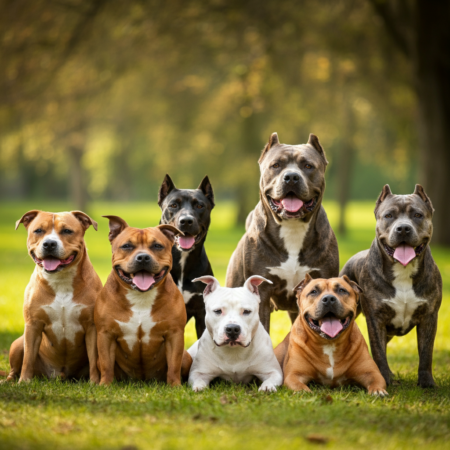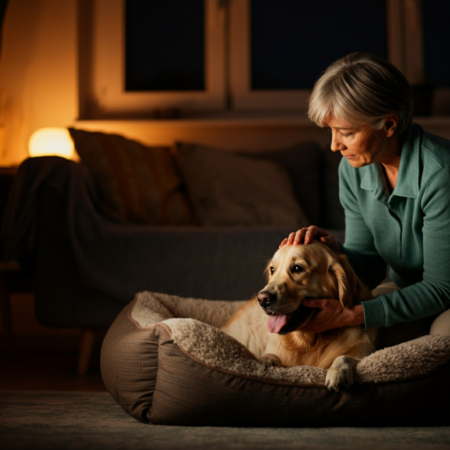Do you often hear your dog panting at night and wonder if it’s normal? While panting is a natural cooling mechanism for dogs, it can sometimes indicate deeper issues when it becomes excessive, particularly at night. Understanding why your dog-dog eating can help you address potential health concerns and ensure your furry friend stays comfortable and healthy.
This guide will explain the causes of dog panting at night, what to look for, and how to take action when necessary.
- Why Do Dogs Pant?
- Normal Panting Behavior
- Common Causes of Normal Panting
- Common Causes of Excessive Panting at Night
- 1. Heat Regulation Issues
- 2. Anxiety and Stress
- 3. Pain or Discomfort
- 4. Respiratory Issues
- 5. Metabolic Disorders
- 6. Heatstroke
- When Should You See a Veterinarian?
- What Dog Owners Can Do
- Addressing Other Concerns
- What to Take Away
- FAQs
Why Do Dogs Pant?
Panting is an essential process for dogs. Since dogs lack sweat glands like humans, they primarily regulate their body temperature. Dogs naturally cool themselves by inhaling cooler air and exhaling warm moisture.
Normal Panting Behavior
A dog’s panting behaviour can vary depending on the situation. Here are some characteristics of normal panting to keep in mind:
- Rate: Gentle and steady, often slowing down as their body temperature normalizes.
- Sound: Quiet and rhythmic, not laboured or wheezy.
- Body Language: Relaxed posture with no signs of stress or restlessness.
Common Causes of Normal Panting
- Activity Level: After playtime, exercise, or a long walk, panting is how dogs recover.
- Temperature Changes: Warm weather or staying too close to a heater may prompt mild panting.
- Excitement or Happiness: Greeting you at the door with wagging tails and panting is a sign of excitement.
Occasional, light panting is perfectly normal, but what about when the panting at night becomes excessive?
Common Causes of Excessive Panting at Night
If your dog’s panting suddenly increases and becomes more frequent, it might be worth looking into the underlying cause. Here are the most common explanations for excessive panting at night.
1. Heat Regulation Issues
Dogs may pant more at night if they struggle to cool down in a hot or poorly ventilated environment.
- Signs of Overheating: Excessive panting that doesn’t subside.
- Reddened gums and tongue.
- Lethargy or disorientation.
- How to Keep Your Dog Cool: Use a fan or air conditioning to maintain a comfortable room temperature.
- Offer fresh, cool water before bedtime.
- Ensure your dog is lying on a breathable surface, like a cooling mat.
2. Anxiety and Stress
Nighttime anxiety, triggered by separation, unfamiliar noises, or storms, can cause dogs to pant excessively.
- Everyday Stressors: Thunderstorms or loud noises.
- Sleeping alone in a new environment.
- Changes in their daily routine.
- Signs of Stress: Restlessness or pacing.
- Excessive licking or whining.
- Hiding or clinging to you.
- How to Reduce Stress: Create a safe, cosy space for your dog using blankets or a crate.
- Try calming aids like pheromone diffusers or anxiety vests.
- Establish a consistent bedtime routine to help your dog feel secure.
3. Pain or Discomfort
Pain can also manifest through panting, especially if your dog faces challenges like injuries, arthritis, or inflammation.
- Common Pain-Related Causes: Joint issues like arthritis (common in older dogs).
- Undetected injuries or wounds.
- Signs of Pain: Limping or reluctance to move.
- Sensitivity to touch.
- Whimpering or groaning.
- What to Do: Check your dog for visible injuries, swelling, or tenderness.
- Consult a veterinarian for proper pain management or treatment.
4. Respiratory Issues
Panting may also indicate an underlying respiratory problem, such as asthma or bronchitis. These issues can interfere with your dog’s breathing, especially at night.
- Signs of Respiratory Distress: Wheezing or coughing.
- Rapid, shallow breathing.
- Nostrils flaring or open-mouth breathing.
- Take Immediate Action: If you notice these symptoms in conjunction with excessive panting, seek veterinary attention. Prompt care can be life-saving.
5. Metabolic Disorders
Disorders like Cushing’s disease, a hormonal imbalance, can lead to increased panting. These imbalances often cause other notable symptoms.
- Signs of Metabolic Imbalance: Increased thirst and urination.
- Potbelly appearance.
- Hair thinning or excessive shedding.
6. Heatstroke
Though technically related to heat regulation, heatstroke deserves special attention due to its life-threatening nature.
- Symptoms of Heatstroke: Rapid panting and difficulty breathing.
- Vomiting or diarrhoea.
- Collapse or seizures.
When Should You See a Veterinarian?
If any of the following symptoms accompanies your dog’s panting at night, it’s time to consult your veterinarian immediately:
- Lethargy.
- Fever or elevated body temperature.
- Coughing or labored breathing.
- Restlessness or persistent pacing.
- Visible signs of pain or discomfort.
Prompt intervention addresses potentially serious conditions and ensures your dog’s well-being.
What Dog Owners Can Do
To promote your dog’s comfort and health, consider these practical tips:
- Create a Comfortable Sleeping Environment:
- Keep your dog’s sleeping area cool and ventilated.
- Choose soft, supportive bedding.
- Ensure Proper Exercise:
- Evening walks can help your dog expend energy before bed.
- Incorporate mental stimulation to reduce anxiety.
- Stay Up-to-Date on Vet Visits:
- Regular check-ups are crucial for monitoring health and spotting issues early on.
Addressing Other Concerns
- Heatstroke Prevention:
Ensure your dog stays hydrated, limits outdoor activity during peak heat hours, and provides shade when outside.
- Panting with Restlessness:
Restlessness and panting, especially on otherwise cool nights, are red flags. Seek veterinary care when you notice this pattern.
What to Take Away
Panting at night can range from normal behaviour to a sign of something more serious. Monitoring your dog’s patterns and being proactive when you notice unusual behaviour can make all the difference in keeping them happy and healthy.
You can effectively address excessive panting by ensuring a cool, stress-free environment and looking for warning signs like pain or respiratory distress.
When in doubt, always consult your veterinarian—they’re your best partner in ensuring your dog’s well-being.
FAQs
1. Should I be worried about my dog panting at night?
Light panting after exercise, excitement, or warm weather is expected. However, excessive or unexplained panting warrants a closer look.
2. What immediate actions can I take if my dog is overheating?
Move your dog to a more fabulous area, provide fresh water, and use a fan or damp cloth to cool them. Monitor closely for heatstroke symptoms.
3. Can anxiety cause nighttime panting?
Yes, anxiety or stress from separation, loud noises, or new environments can lead to panting. Creating a safe and calming space can help.
4. How can I tell if panting is due to pain?
Watch for limping, sensitivity to touch, or other signs of discomfort, such as whining or groaning. If unsure, seek a vet.








